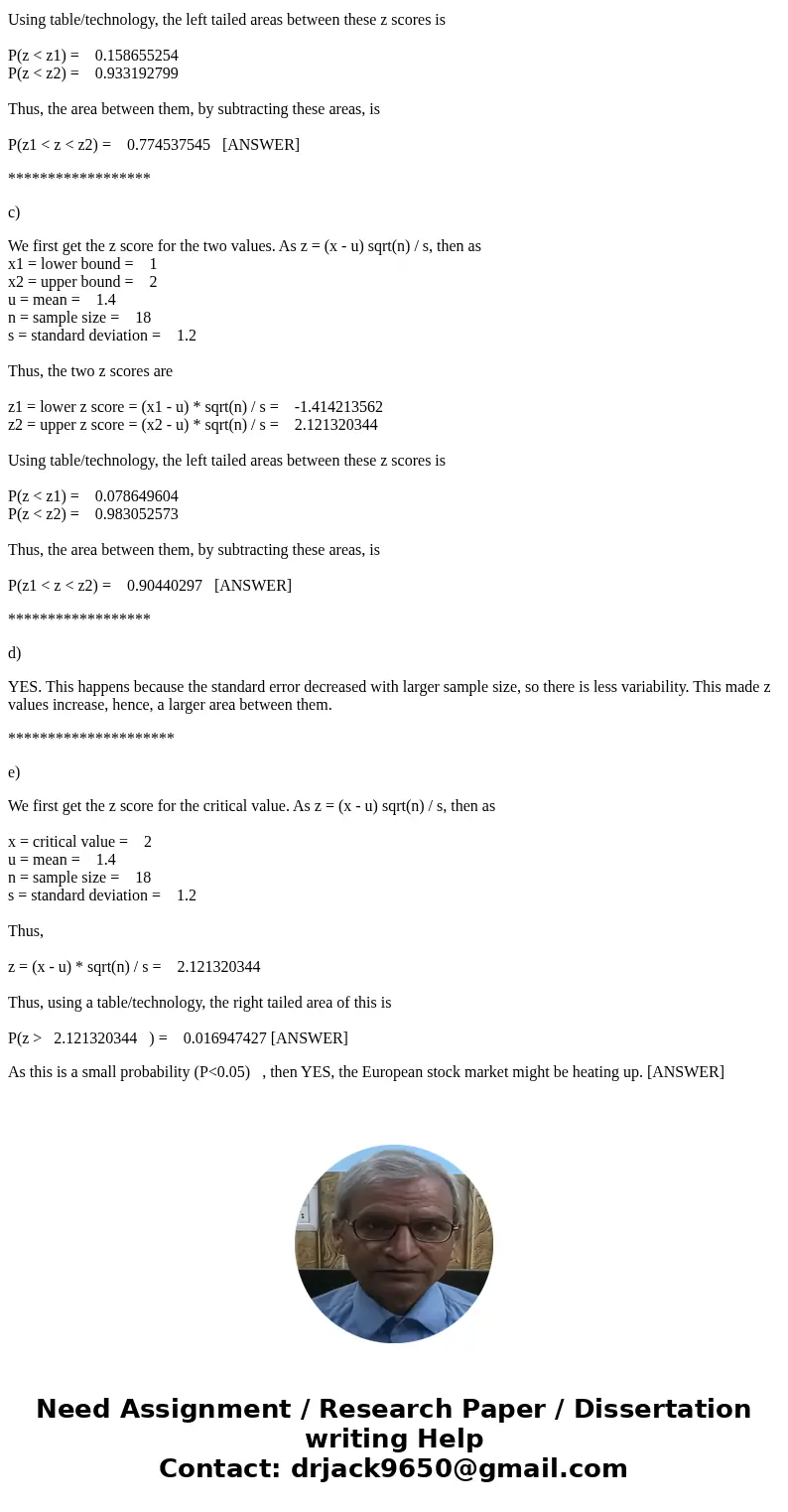A European growth mutual fund specializes in stocks from the
A European growth mutual fund specializes in stocks from the British Isles, continental Europe, and Scandinavia. The fund has over175 stocks. Let x be a random variable that represents the monthly percentage return for this fund. Suppose x has mean = 1.4%and standard deviation = 1.2%.
(a) Let\'s consider the monthly return of the stocks in the fund to be a sample from the population of monthly returns of all European stocks. Is it reasonable to assume that x (the average monthly return on the 175 stocks in the fund) has a distribution that is approximately normal? Explain.
(b) After 9 months, what is the probability that the average monthly percentage return x will be between 1% and 2%? (Round your answer to four decimal places.)
(c) After 18 months, what is the probability that the average monthly percentage return x will be between 1% and 2%? (Round your answer to four decimal places.)
(d) Compare your answers to parts (b) and (c). Did the probability increase as n (number of months) increased? Why would this happen?
(e) If after 18 months the average monthly percentage return x is more than 2%, would that tend to shake your confidence in the statement that = 1.4%? If this happened, do you think the European stock market might be heating up? (Round your answer to four decimal places.)
Explain.
Solution
a)
Yes, as we can have negative returns, so we can cater many standard deviations around the mean.
******************
b)
We first get the z score for the two values. As z = (x - u) sqrt(n) / s, then as
x1 = lower bound = 1
x2 = upper bound = 2
u = mean = 1.4
n = sample size = 9
s = standard deviation = 1.2
Thus, the two z scores are
z1 = lower z score = (x1 - u) * sqrt(n) / s = -1
z2 = upper z score = (x2 - u) * sqrt(n) / s = 1.5
Using table/technology, the left tailed areas between these z scores is
P(z < z1) = 0.158655254
P(z < z2) = 0.933192799
Thus, the area between them, by subtracting these areas, is
P(z1 < z < z2) = 0.774537545 [ANSWER]
******************
c)
We first get the z score for the two values. As z = (x - u) sqrt(n) / s, then as
x1 = lower bound = 1
x2 = upper bound = 2
u = mean = 1.4
n = sample size = 18
s = standard deviation = 1.2
Thus, the two z scores are
z1 = lower z score = (x1 - u) * sqrt(n) / s = -1.414213562
z2 = upper z score = (x2 - u) * sqrt(n) / s = 2.121320344
Using table/technology, the left tailed areas between these z scores is
P(z < z1) = 0.078649604
P(z < z2) = 0.983052573
Thus, the area between them, by subtracting these areas, is
P(z1 < z < z2) = 0.90440297 [ANSWER]
******************
d)
YES. This happens because the standard error decreased with larger sample size, so there is less variability. This made z values increase, hence, a larger area between them.
*********************
e)
We first get the z score for the critical value. As z = (x - u) sqrt(n) / s, then as
x = critical value = 2
u = mean = 1.4
n = sample size = 18
s = standard deviation = 1.2
Thus,
z = (x - u) * sqrt(n) / s = 2.121320344
Thus, using a table/technology, the right tailed area of this is
P(z > 2.121320344 ) = 0.016947427 [ANSWER]
As this is a small probability (P<0.05) , then YES, the European stock market might be heating up. [ANSWER]


 Homework Sourse
Homework Sourse